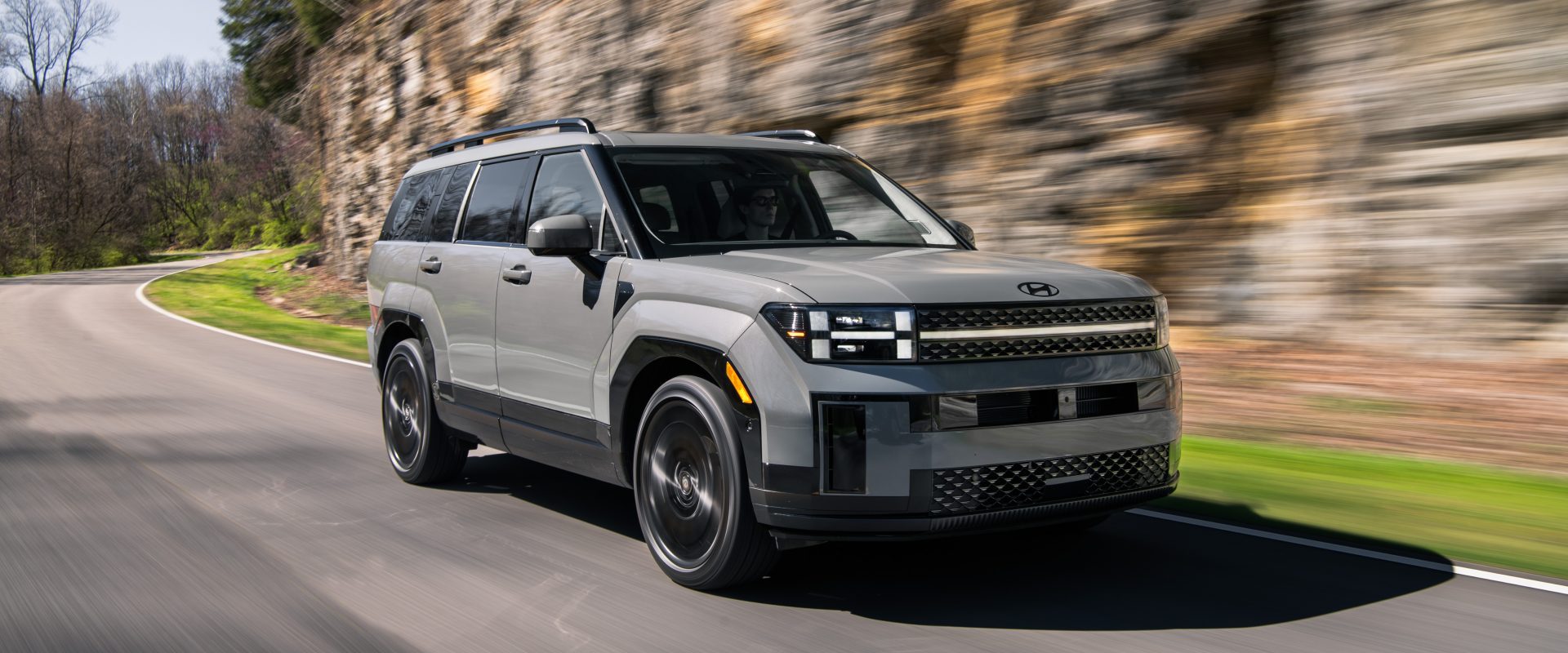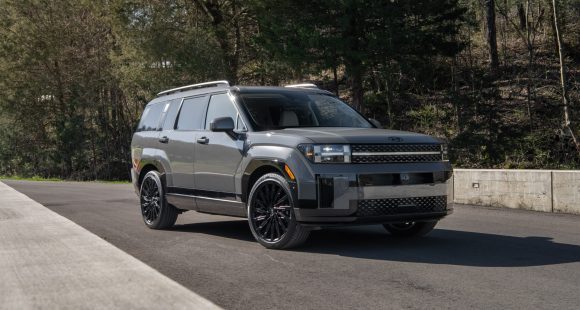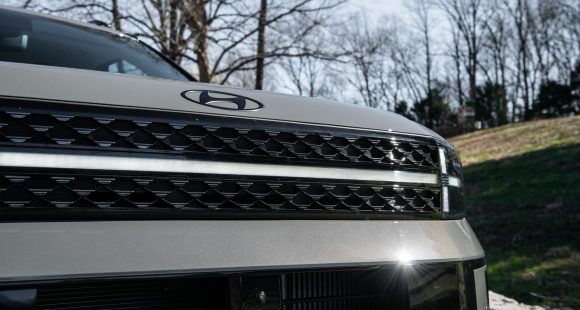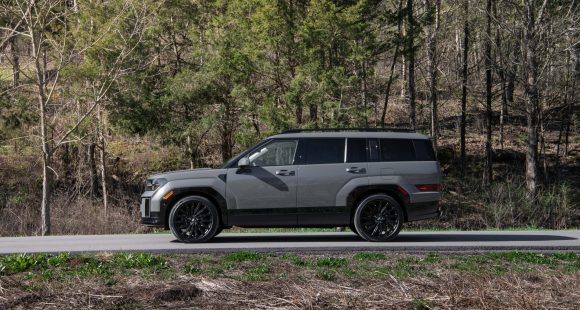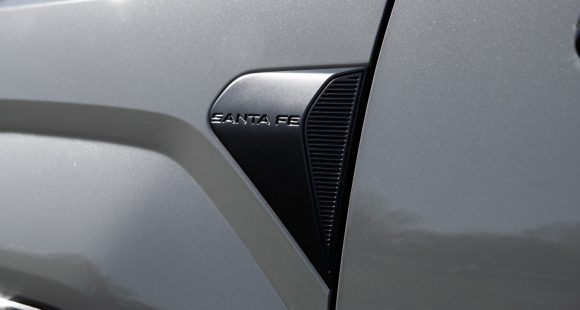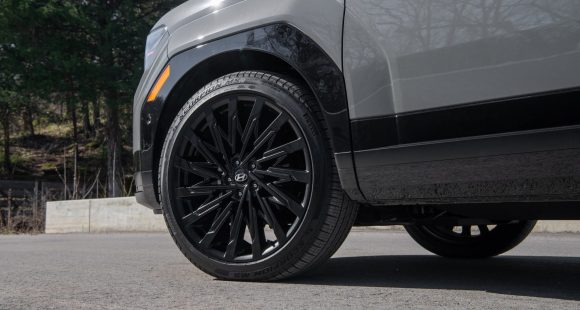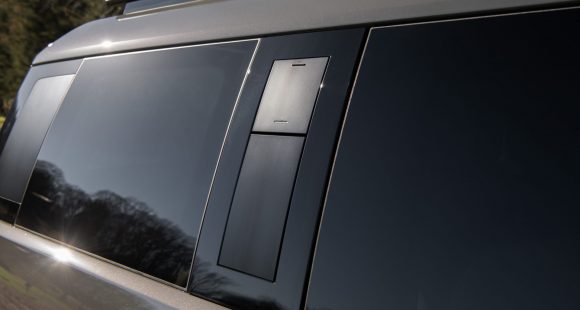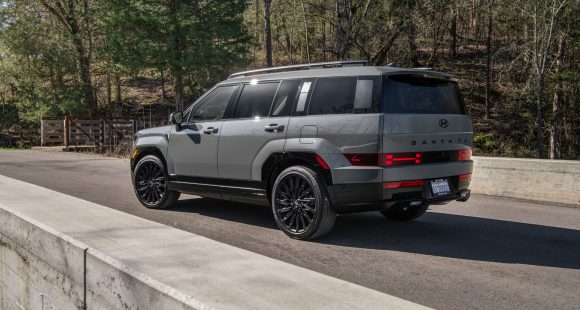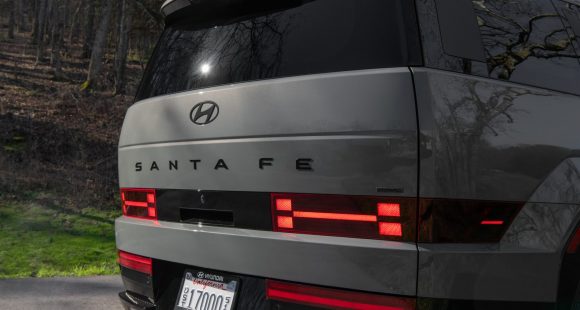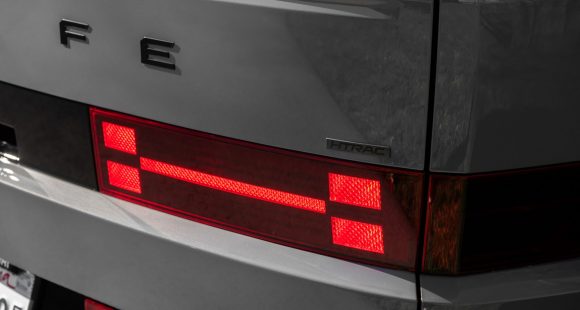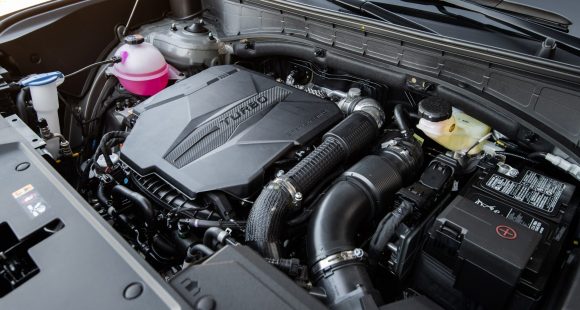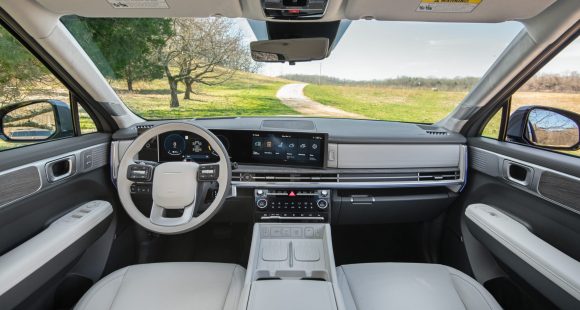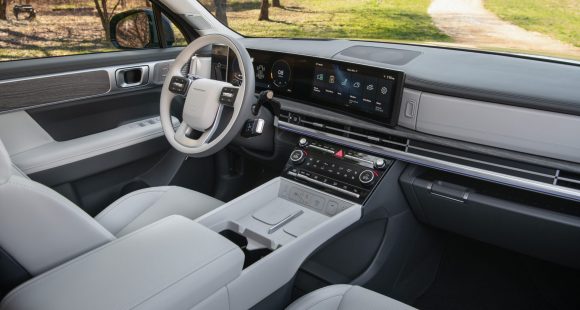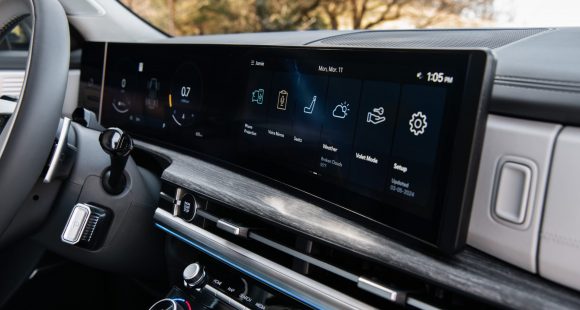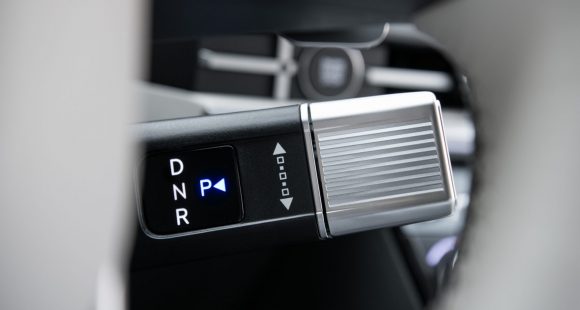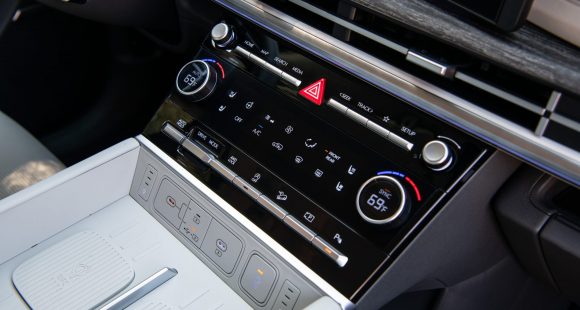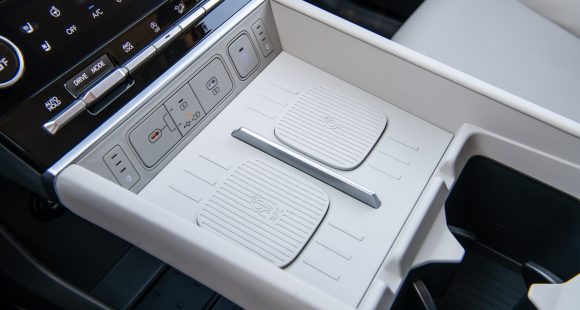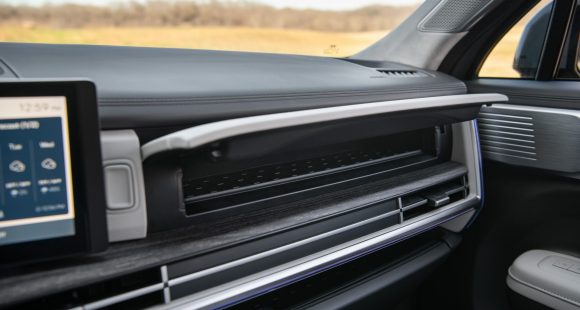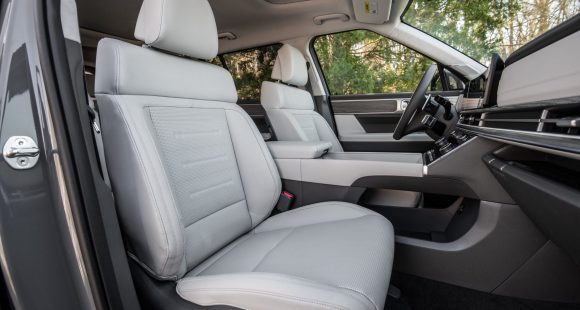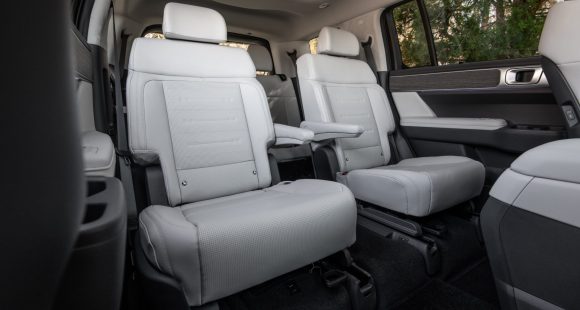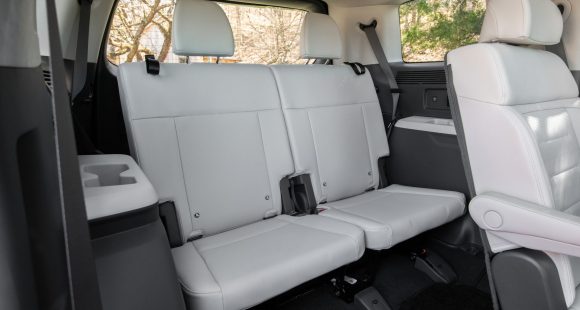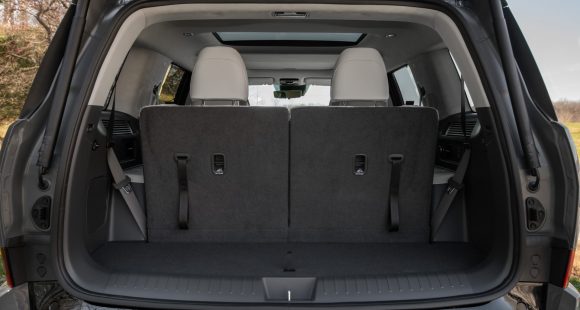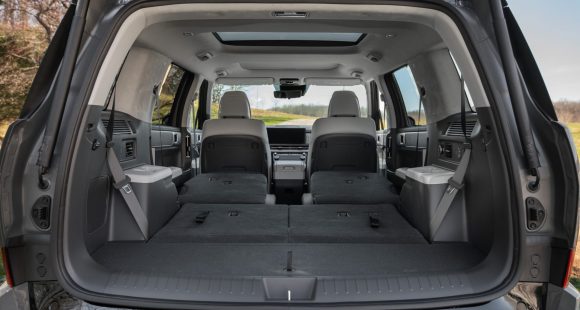2012 Fisker Karma
As we make our way to an electric-powered driving future, there are many different methods for getting us there - from hybrids, to plug-ins, to even a few full-electrics. And, while most of us are familiar with the concept of karma, most people are not familiar with the Fisker Karma. The Fisker Karma is the world’s first EV luxury sports sedan with extended range. And, as they say, what goes around comes around; so let’s find out what comes from our first go-round.
So what exactly does it mean to be the world’s first EV luxury sport sedan with extended range? Well, for the 2012 Fisker Karma it means driving up to 50 miles on electric power alone, before shifting to gas power, which comes from a turbocharged inline-4, increasing your range to up to 300-miles; but as always, your results may vary. More on that later.
The drive system is similar to Chevrolet’s Volt, but one-ups it by sending power to the rear wheels, and allowing drivers to manually select all-electric or hybrid-electric drive. And the Karma “ups” just about every other car when in comes to style, as the look is far more “sport-luxury” than “eco” with smooth lines wrapping around standard 22-inch wheels and an aluminum space frame.
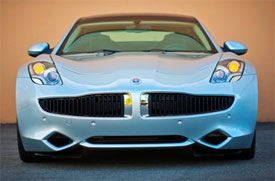 Sheet “metal” is actually a mix of aluminum and composite body panels, and the sleek roof is comprised of a solar panel that not only looks cool, but sends power directly to the batteries to aid in charging. Those batteries are located in the central “spine” of the car, and are mounted as low as possible.
Sheet “metal” is actually a mix of aluminum and composite body panels, and the sleek roof is comprised of a solar panel that not only looks cool, but sends power directly to the batteries to aid in charging. Those batteries are located in the central “spine” of the car, and are mounted as low as possible.
Exhaust tips sit just behind the front wheels, expelling spent gas from the GM Ecotec 2.0-liter turbocharged I4 engine. It sends its 260-horsepower through a Rear Differential Module and two rear-mounted electric traction motors, so there’s no direct engine connection to the wheels. There’s also no traditional transmission, but drivers can choose whether to run in EV “Stealth” mode or full-power “Sport” mode with steering wheel mounted paddles.
All combined, the system puts out 403-horsepower and almost 1,000 pound feet of torque, and that’s where the “sport” part of the equation comes in. There’s instant throttle response when the battery is full, and the Karma zips to 60 in 6.3-seconds. But even when the battery is drained and you’re running on just engine, it’s still very impressive; top speed is 125 miles-per-hour. Batteries are lithium-ion and have been a problem, causing a Karma to stop dead while being tested by Consumer Reports. All 2500 Karmas on the road will get new battery packs under warranty. That battery pack pushes curb weight to a hefty 5,300 pounds, and that calls for serious brakes. Fortunately, the standard Brembo’s are up to the task and include regenerative braking.
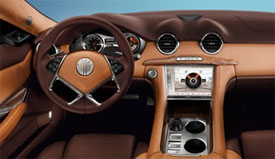 The power-train might be all about the environment, but the interior environment is all about high-tech, yet it remains clean and simple. Unique items include the funky push button drive selector and a 10-inch Fisker Command Center touch-screen that manages just about every interior function. Gauges are designed with both an eye towards high-end time pieces and classic sports car dials. Real wood trim is used throughout - all certified reclaimed as sunken, fallen, or rescued. Rear seat passengers get big bucket seats with a substantial center console between them. And there’s a real, but small trunk with 6.9 cubic-feet of space.
The power-train might be all about the environment, but the interior environment is all about high-tech, yet it remains clean and simple. Unique items include the funky push button drive selector and a 10-inch Fisker Command Center touch-screen that manages just about every interior function. Gauges are designed with both an eye towards high-end time pieces and classic sports car dials. Real wood trim is used throughout - all certified reclaimed as sunken, fallen, or rescued. Rear seat passengers get big bucket seats with a substantial center console between them. And there’s a real, but small trunk with 6.9 cubic-feet of space.
The driving experience of the Karma is unique, but not foreign. There is a distinct hum from the power-train when in Stealth mode. The gas-engine kicks in fairly smoothly, but still noticeably. The suspension is a Short-Long Arm design with load-leveling monotube coil-overs and stabilizer bars, giving a surprisingly supple ride, even with the giant wheels. A 3.3 kWh battery charger is onboard and can charge the Karma on household 120 or 240-volt circuit, taking as little as 6-hours.
As for the Government Fuel Economy Ratings, they didn’t come out quite as good as Fisker had wished. The MPG equivalent is 52 miles-per-gallon combined in electric mode and 20 miles-per-gallon from the gasoline engine. The EPA also estimates only 32-miles of electric only range. The Chevrolet Volt is rated higher.
As for more shocking numbers, Karma pricing begins at a lofty $96,850 for the EcoStandard, the mid-level EcoSport comes in at $104,580, while the top level EcoChic tips the scales at $109,850. But then, early adopters always pay a price penalty.
The 2012 Fisker Karma is certainly one beautiful ride, and we’d probably buy it based on looks alone; but we think it is also a very significant vehicle. It has taken a premium-step up in the auto industry’s slow climb towards an electrified future, and done it without looking or acting like an “eco-mobile.” So, come for the styling, stay for the progress, and enjoy the ride.
Specifications
- Engine: 2.0-liter turbocharged I4
- Horsepower: 260
- 0-60 mph: 6.3 seconds
- EPA: 32 mpg electric/ 20 mpg gasoline
2024 Hyundai Santa Fe
Hyundai’s Santa Fe Aims For Land Rover
The Hyundai Santa Fe has been through many changes during the four generations and 23 years that it’s been sold here in the U.S., but none more dramatic than what is being offered for 2024. This fifth-gen Santa Fe is certainly bigger and definitely boxier, but is it a better Santa Fe?
This 2024 Hyundai Santa Fe is indeed a major departure from the wide-mouth, chrome-clad, swoopy-styled midsize five-passenger utility that we’ve known for the last 5 years, and it brings some other big changes with it.
The look is now more slab-sided, slimmed-down, and off-road inspired; drawing comparisons to Land Rover from just about everyone we encountered. The wheelbase has been extended by almost 2 inches, which adds to interior space; so much so that a third row of seating is now once again standard in the Santa Fe. Like many major departures when it comes to styling, time will tell how well it ages, or if there will be another big swing next time around. Many on our staff were not fans of the 21-inch wheels that come with the top Calligraphy trim; and it does appear like they ran out of ideas when they got to the back and called it a day.
But that flat tailgate is 6 inches wider than the previous gen, allowing for very-much minivan-like access to the cargo area, which Hyundai says is the launchpad for adventures, no longer just a simple cargo bay. There’s room for 14.6 cu-ft of adventure gear, or just groceries, behind the third row, 40.5 cu-ft behind the second row, and a max of 79.6 cu-ft with all seatbacks folded. And if you can’t fit everything back there, Hyundai has integrated a cool grab handle into the C-pillar for helping you load stuff up top.
The cockpit of this adventure vehicle feels much more like a luxury car than a rugged utility. Maybe that’s the Land Rover influence again. But really, it’s mostly on-brand from what we’ve been seeing from Hyundai lately. That’s especially the case when you escalate things to top Calligraphy trim. Its $12,500 over base and comes with features such as quilted Nappa leather seats, Eco-suede materials, dual wireless phone chargers, a sweeping panoramic curved dual screen display that we’re more accustomed to seeing in Genesis, with sturdy captain’ chairs with lots of adjustments in the second row. Two-place seating in the standard third row means a capacity of six; lesser trims come with a second-row bench upping that number to seven.
The cockpit of this adventure vehicle feels much more like a luxury car than a rugged utility.
The 2.5-liter I4 turbocharged engine returns, but now as the standard powertrain, getting slightly detuned to 277 horsepower but with the same 311 lb-ft of torque as last year. All-wheel drive is an $1,800 option for all trims except in the off-road inspired XRT where it is included. A 231-horsepower Hybrid is optional. This is a lot of vehicle for the standard four-cylinder to move, even if it is turbocharged, but that seems to be the way things are heading these days. So, we’ll just have to accept the tepid jog to 60 of 7.0 seconds. To be fair, it’s still plenty quick for running errands with the family.
It uses a dual-clutch eight-speed transmission rather than a traditional automatic. Gear changes were smooth with some power drop with each upshift. We reached 95 mph at the end of the quarter-mile in 15.4 seconds. This bigger Santa Fe felt very stable at speed going down the track. It was more in its element in our handling course, with sharp and responsive steering, great balance, and lots of feedback; all making it easy to keep momentum going through the cones. We saw plenty of nosedive with a soft brake pedal in our panic braking runs. But results were quite good, with stops from 60 averaging 111 feet.
Government Fuel Economy Ratings with all-wheel drive are 20 City, 28 Highway, and 23 Combined; rounding up our 22.6 mpg of Regular average puts it right on.
An ever increasingly wide bandwidth of options has the base Santa Fe starting at $35,365 and reaching all the way up to $47,915 for top Calligraphy; the Hybrid is available in SEL, Limited, and Calligraphy trims only.
Love it or hate it, the 2024 Hyundai Santa Fe has made a bold step in style, but it still has plenty of substance to back it up. So yes, it is a better Santa Fe, and now with a definite upmarket push, it lands as an even greater mid-size utility value.
Specifications
As Tested
- Engine: 2.5-liter I4 Turbo
- Transmission: 8-speed dual-clutch auto
- Horsepower: 277
- Torque: 311 lb-ft
- EPA: 20 City | 28 Highway | 23 Combined
- 0-60 mph: 7.0 seconds
- 1/4 Mile: 15.4 seconds at 95 mph
- Braking, 60-0 (avg): 111 feet
- MW Fuel Economy: 22.6 MPG (Regular)







